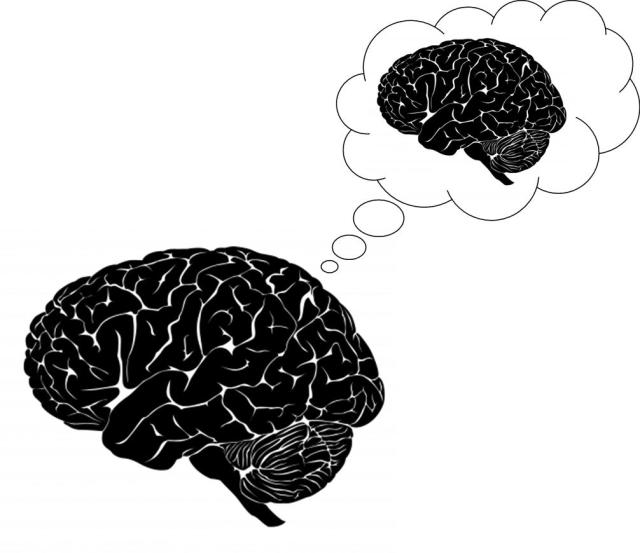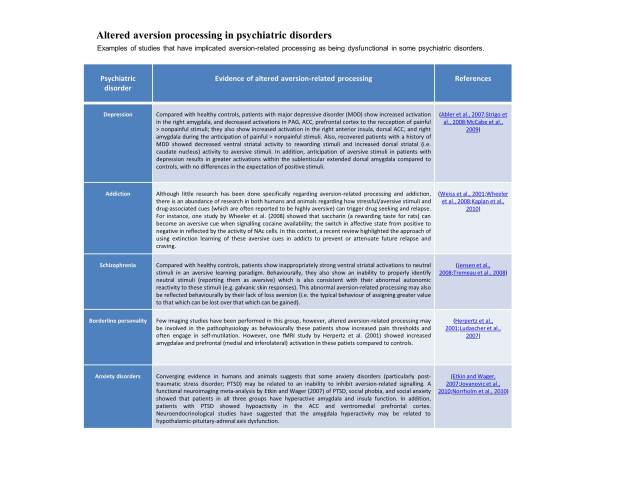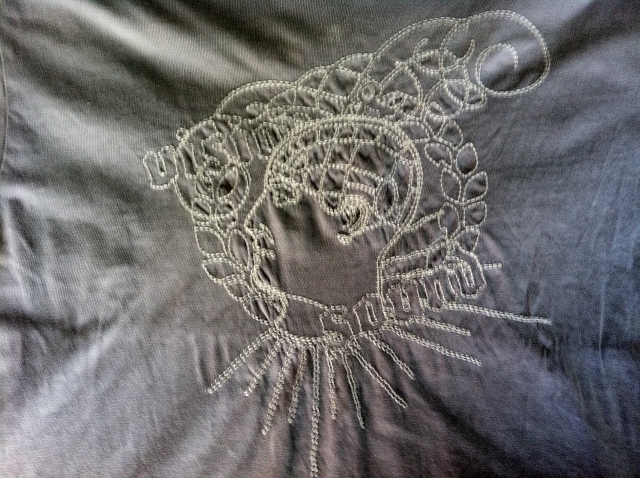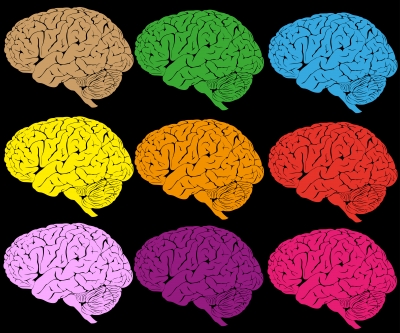 This guest blog was written by Christian Stevens, a graduate student in the philosophy department at the University of Guelph. His work is in the area of Epistemology and Philosophy of Mind.
This guest blog was written by Christian Stevens, a graduate student in the philosophy department at the University of Guelph. His work is in the area of Epistemology and Philosophy of Mind.
We are physical beings in a physical world. This is the thesis of physicalism, the view that reality is made up of one kind of ‘stuff,’ and that stuff is physical. Physicalism, therefore, is what’s typically referred to as an ontological thesis, a thesis about what exists. Historically speaking, perhaps the most popular alternative to monistic views about the nature of reality, of which physicalism is a particular kind, are dualistic views of the nature of reality. Dualists claim that reality is made up of two distinct substances. 17th century philosopher, scientist and mathematician Rene Descartes, famously argued that reality is made up of both mind and matter. Descartes’ substance dualism also included a picture of reality where mind and body (or matter) interact (e.g. my mental desire to lift my arm causes the physical event of my arm going up). This notoriously puzzling view of the relationship between mind and body is often referred to as interactionist dualism or interactionism, for short.
Hempel’s dilemma: what is physicalism?
Now, in Descartes’ time there was, and continued to be for quite awhile after his death, a pretty clear conception of the ‘material’ or the ‘physical.’ At a fundamental level, ordinary objects like tables and chairs were constituted out of minute particles (called corpuscles) that were, in principle, divisible (like entities at a macro-level). The corpuscles were also subject to the law of causality (cause and effect). Part of the reason why modern day materialists prefer to call themselves physicalists is to distance themselves from the above conception of reality, which has since eroded due mainly to striking developments in 20th century physics.
Such developments apparently assure us that causality, as philosopher and mathematician Bertrand Russell once wrote, “…is a relic of a bygone age, surviving, like the monarchy, only because it is erroneously supposed to do no harm”. If the absence of causality at the level of fundamental physics were not enough, we are also no longer at liberty to think of reality as made up of minute particles either; wave-particle duality has shaken the other pillar of the conception of the physical or material. Physicalism, then, might be a far less substantive claim about the nature of reality than initially thought.
Philosopher Carl G. Hempel once attacked how physicalism was defined. He made the point that if physicalism defines itself in relation to current physics, then surely it will end up being false; how many of us seriously believe that physics is not going to change in the next 50 years or less, in which case what was true of the nature of reality at one time will be false at another (an undesirable, if not absurd, result). He also pointed out, however, that if physicalism is defined in terms of some future physics or ideal physics then it is vacuous; who knows what some future or ideal physics will look like? This conundrum is often referred to as Hempel’s dilemma. As far as I’m concerned, we have yet to come up with an entirely satisfying response to the problem.
Do physicality and consciousness meet?
Moreover, in this context (as well as in others, of course,), it is interesting to consider consciousness, in relation to physicalism. Consciousness, or phenomenal consciousness, the ‘felt’ or ‘qualitative’ character of perceptual states, is highly recalcitrant to definition in a non-circular way. Some philosophers, like Kriegel have suggested that we ought to adopt a ‘flexible characterization’ of phenomenal consciousness like ‘the property of mental states that constitutes or generates the mystery surrounding consciousness. This makes sense because consciousness is widely recognized in the philosophical literature as ambiguous (see Block). So talking about a property that generates a mystery surrounding consciousness makes reference to other concepts or aspects of consciousness that are not, typically, considered particularly vexing or mysterious (see Chalmers, for an argument on the separation of ‘easy problems’ from the ‘hard problem’ of consciousness).
At any rate, my point in bringing all this up here is that given the vagueness of both physicalism and consciousness, perhaps we should consider the possibility of a rapprochement between consciousness and the physical, as neutral monism suggests. Neutral monism is the view that reality consists of one neutral kind of stuff (which is neither mental nor physical). But, while we might have trouble understanding what is meant by ‘physical’ at some deep level, we seem to have less difficulty coming up with candidates for the constitution of consciousness in terms of some fairly well-behaved phenomenon (e.g., certain patterns of neural activity in the pre-frontal cortex). Though, I would suggest, this is not necessarily to say that we understand how consciousness could be physical in this sense. It also leaves open the question as to why we should count neural activity in the brain as physical, or how understanding neural activity as physical is best understood.
The explanatory gap: How far can science take us?
Part of a commitment to physicalism for many, also involves a commitment to the explanatory power of the sciences. The sciences appear to be able to provide us with a deep understanding of the nature of the cosmos, life and the like. Now, here’s where things get tricky: if there are reasons for thinking that the sciences can never adequately explain a certain phenomenon, is that evidence for thinking that said phenomenon is, therefore, non-physical? There are, as far as most philosophers of mind are concerned, powerful considerations that can be adduced in favor of an explanatory gap between consciousness and the physical (see Levine). Is this, on the face of it, evidence that physicalism is false? Some in the philosophical community say yes, others no. I think that if we don’t have a clear grasp on what calling something physical means, then we are committed to thinking that the sciences, and especially, physics, do not admit of explanatory gaps.
The physicalist would like to have the best of both worlds: a robust conception of the physical without any gaps whatsoever. But, a commitment to physicalism, at a minimum, requires one to defend either the explanatory power of the sciences, or some fairly robust conception of the physical. So, if there is some phenomenon that, in principle, cannot be understood (explained) by us, and we have no clear conception of what the physical is, or, more precisely, what calling that particular phenomena physical would amount to, then physicalism is in terrible shape. So, in the case of consciousness, we need either a fairly robust understanding of what it would be/mean to call it a physical phenomenon (as a first step anyway), or we need to be able to explain consciousness in a way that’s relevantly similar to explanations of other canonically physical stuff/processes. Since we do, presumably, have a fairly robust conception of what kind of stuff could be constitutive of consciousness, then even if we don’t understand exactly how that very stuff could be constitutive of consciousness, physicalism may, nevertheless, emerge unscathed.
My preferred route for defending physicalism, however, (like many philosophers) is to try and bridge the explanatory gap. This will, I think, require questioning models philosophers have in mind for how explanation tends to work in the sciences (for an example of such a model see Chalmers and Jackson). If we can refute such models then we will have a better chance at showing how the sciences have the resources to explain consciousness in a way that’s consonant with explanations figuring in physics or biology etc.… without, perhaps, having to take a stand on either the relationship between the sciences (do all the so-called special sciences reduce to physics?), or say what exactly is meant by the physical, both of which, I think, must ultimately be done if we decide to accept the explanatory gap consciousness is said to produce. This, alas, is liable to be no small feat!
Selected references
Block, N.J., O. Flanagan, and G. Guzeldere (eds.) 1997. The Nature of Consciousness: Philosophical Debates. Cambridge, MA: MIT Press.
Chalmers, D. 1995. Facing up to the problem of consciousness. Journal of Consciousness Studies, 2: 200-19.
Chalmers, D., & Jackson, F. (2001). Conceptual Analysis and Reductive Explanation The Philosophical Review, 110 (3) DOI: 10.2307/2693648
Hempel, C.G. 1969.Reduction: Ontological and Linguistic Facets. Philosophy, Science, and Method: 179–199.
Levine, J. 1983. Materialism and qualia: the explanatory gap. Pacific Philosophical Quarterly, 64: 354-361.
Kriegel, U. 2009. Subjective Consciousness: A Self-Representational Theory. NY: Oxford University Press.
Russell, B. 1917. On the Notion of Cause, ch.9 in Mysticism and Logic and Other Essays. London: Unwin.
 By now, we’re all familiar with the colourful spots and blobs associated with brain imaging. The assumption is often that areas which ‘light up’ are increasingly activated – and are, as such, implicitly more ‘important’ – in the task under study. But researchers using brain imaging techniques know this to be untrue. Some of the most interesting blobs that have been identified are known to reflect relative decreases in brain activity, often referred to as deactivations. A particularly interesting example, Dr David Nutt and colleagues found that the effects of psilocybin, the psychedelic found in magic mushrooms, are associated with widespread deactivations – suggesting that its effects are counter-intuitively due to less brain activation and/or altered connectivity between regions. For those interested, the controversy surrounding Dr. Nutt – which began around the time he cheekily argued that taking ecstasy was less harmful than horse-riding (see here for copy of the academic paper) – and his research continue with the funding of a much-needed study looking at the effects of psilocybin on depression.
By now, we’re all familiar with the colourful spots and blobs associated with brain imaging. The assumption is often that areas which ‘light up’ are increasingly activated – and are, as such, implicitly more ‘important’ – in the task under study. But researchers using brain imaging techniques know this to be untrue. Some of the most interesting blobs that have been identified are known to reflect relative decreases in brain activity, often referred to as deactivations. A particularly interesting example, Dr David Nutt and colleagues found that the effects of psilocybin, the psychedelic found in magic mushrooms, are associated with widespread deactivations – suggesting that its effects are counter-intuitively due to less brain activation and/or altered connectivity between regions. For those interested, the controversy surrounding Dr. Nutt – which began around the time he cheekily argued that taking ecstasy was less harmful than horse-riding (see here for copy of the academic paper) – and his research continue with the funding of a much-needed study looking at the effects of psilocybin on depression.














